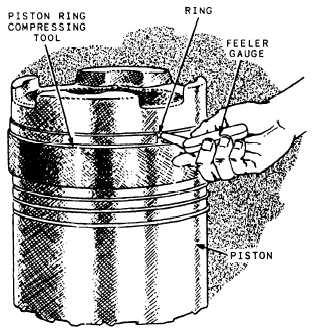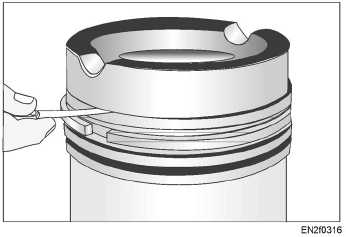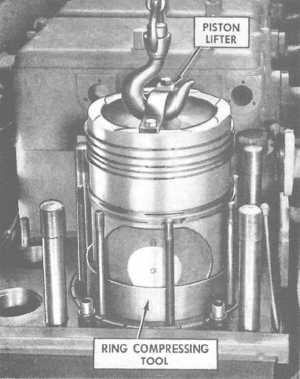Figure 3-22.–Checking ring gap clearance.
been installed, check the ring-to-land clearance. (See
fig. 3-23.) If the clearance is too small, the ring may
bind or seize, allowing improper sealing and blowby to
occur. If the clearance is excessive, the ring may flutter
and break itself or the piston land.
After you have properly installed all the rings, coat
the entire assembly with oil, then insert it into the
cylinder bore. Position the rings so the gap of each
successive ring is on an alternate side and the gaps are
in line with the piston pin bosses. On large engines, use
a chain fall to hold the piston assembly in position as
you lower it into the cylinder. (See fig. 3-24.)
Figure 3-23.–Checking ring groove side clearance.
75.56
Figure 3-24.–Installing a piston in a cylinder bore with a
funnel-type ring compressor.
When a piston is being inserted into a cylinder, the
piston rings must be compressed evenly. Special
funnel-type tools, similar to the one shown in figure 3-24
are usually provided for this purpose. Another type of
ring compressing tool is a steel band that can be placed
around the ring and tightened.
PISTONS
Trunk-type pistons are subject to forces such as gas
pressure, side thrust, inertia, and friction. These forces,
together with overheating and the presence of foreign
matter, may cause troubles such as undue piston wear,
crown and land dragging, cracks, piston seizure,
clogged oil holes, and piston pin bushing wear.
Excessive Piston-to-Liner Clearance
Symptoms of excessive clearance between a piston
and its cylinder are piston slap and excessive oil
consumption. Piston slap occurs just after top dead
center and bottom dead center, as the piston shifts its
thrust from one side to the other. As the cylinder taper
increases with wear, oil consumption increases. Since
taper causes the rings to flex on each stroke of the piston,
excess ring wear occurs, allowing lube oil to pass and
3-16







